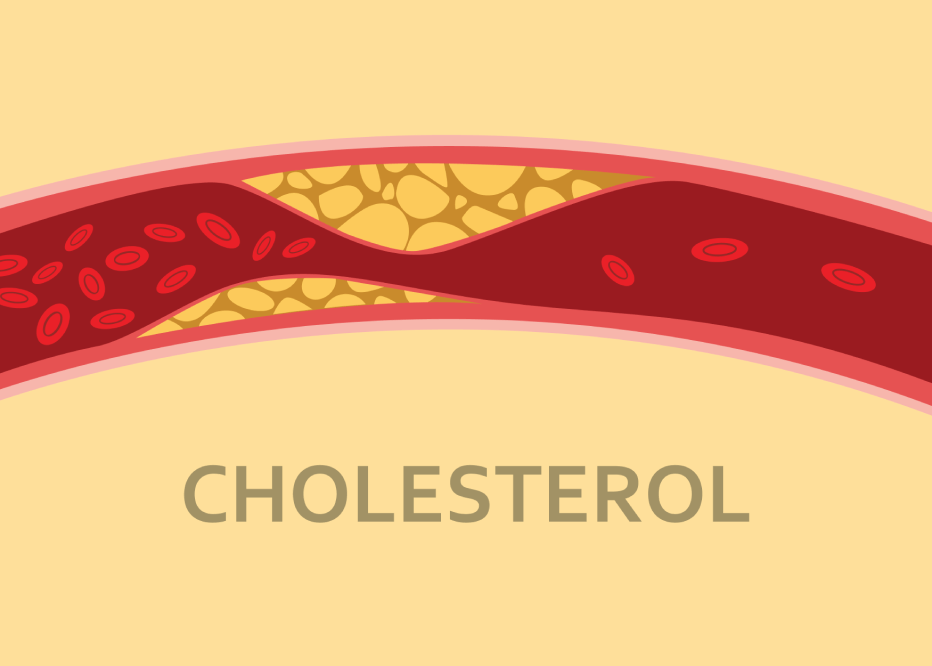The Importance Of Cholesterol In The Body
- Lisa Timmerman

- Jul 21, 2021
- 3 min read
Updated: Nov 26, 2021

DEFINITION: Cholesterol is a high molecular weight sterol. Cholesterol is not a fat. (It is a fat soluble.)
FUNCTIONS
Cholesterol is an important component of the cell membranes, including organelle membranes inside the cell. (The body contains billions of cells.)
The right proportion of phospholipids, fatty acids, and cholesterol in cell membranes allows them to be flexible while still holding their shape.
"Cholesterol is used by the body as raw material for the healing process. This is the reason the injured areas in the arteries (as in atherosclerosis)... have cholesterol along with several other components (such as calcium and collagen) in the 'scar' tissue that is formed to heal the 'wound'."
Cholesterol is found in large amounts in brain tissue where it is needed for normal brain function. Research has shown that cholesterol in eggs is helpful to older people whose memory is declining.
Cholesterol often elevates as part of a protective immune system response to chronic infection.
Infants need plenty of cholesterol for proper brain development and cholesterol is normally found in large amounts in human breast milk. (Infant formulas usually contain little to no cholesterol because of the widespread lack of understanding about cholesterol.)
Adrenal and gonadal hormones are made from cholesterol. These are the stress handling, energy producing and reproductive hormones. (This is why serum cholesterol normally elevates with excessive or prolonged stress.)
Cholesterol is vital for proper nerve function. Three quarters of the myelin membrane is made from fat and of that nearly one quarter is cholesterol.
Vitamin D is made from cholesterol in the skin.
Cholesterol is converted into bile salts in the liver which are needed to break down and emulsify fats.
Cholesterol is needed in large amounts in the skin where it is viral for skin health and strength.
Although lowering serum cholesterol does seem to decrease deaths from heart disease, it "does not, in the least, improve overall mortality rates. People who achieved the lowest cholesterol levels - 160 units or less - had unexpectedly higher rates of death from other causes, such as liver cancer stroke, lung disease, alcoholism, and suicide..."
CHOLESTEROL TRANSPORT
To perform its many important functions in the body, cholesterol is transported from the liver to the cells, tissues, and glands on low density lipoprotein carriers (LDL's).
Reverse cholesterol transport (from the cells and tissues to the liver) is via high density lipoprotein carriers (HDL's).
COMMON REPORTED SIDE EFFECTS OF STATIN AND CHOLESTEROL-LOWERING MEDICATIONS
Chronic aches and pains (especially in muscles and joints)
Progressive cognition and memory problems, confusion, mood problems, depression, dementia
Impaired (slowed) wound healing
Numbness, tingling, swelling, weakness
Impaired immune function
Increasing fatigue, decreased stress-handling ability, impotence
De-myelination disorders such as ALS and MS
Liver damage
Shortness of breath
Increased incidence of Heart Failure, increased susceptibility to degenerative processes
Note: Currently these very common side-effects are routinely denied by prescribing practiotioners and the pharmaceutical industry. Patients reporting these side effects are often told things like "Everybody has aches and pains," or "What do you expect? You're getting old!" If this has happened to you, please believe your own experience and review the further sources of information about common cholesterol drug side effects at the end of his handout.
SOURCES OF CHOLESTEROL
The body makes most of the cholesterol needed in a day (especially in the liver).
Since it is not possible for humans to eat enough cholesterol-containing foods to supply our daily needs the practice of avoiding foods with cholesterol is not an effective way to control serum cholesterol. Not eating cholesterol simply makes the body work harder to produce enough.
Cholesterol is found only in animal tissues where it is a component of membranes. "That is why there is more cholesterol in the lean tissue than there is in the adipose tissue."
"The synthesis of cholesterol is increased more from the consumption of the polyunsaturated fatty acids than from the consumption of saturated fatty acids." The reason for this is that polyunsaturated fatty acids are deposited into the cell membranes and the body then needs to put more cholesterol into these membranes to stabilize them and maintain their correct fluidity (melting point).
Only about 50% of the cholesterol in food is absorbed.
Disclaimer:
This information is not meant to diagnose, treat or replace traditional treatment, and has not been approved by the FDA or HPB.







Comments